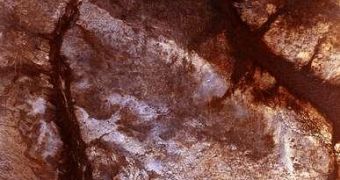Archaeologists uncovered remains of what they think was part of a wider network of water channels that ran through the Sahara desert thousands of years ago. Visible only from satellite, the channels could have offered H. sapiens a safe path out of Africa, where the first humans evolved. Other pieces of evidence suggest that the Red Sea and the Nile river valley were also used by people on their way to the Middle East, the second stop in H sapiens' migration to conquer the world.
According to recent studies, the monsoon-fueled channels could have been as large as 5 kilometers (3 miles) wide. They ran from the central part of the desert – modern Libya – all the way to the Mediterranean Sea, and they could have provided travelers with enough game and fresh water to support them during the migration. The study was conducted by biochemist Anne Osborne, at the University of Bristol in the U.K, who found that bone fragments recovered from both the Middle East and the Sahara closely resembled each other in age and composition.
But the real clues that attracted archaeologists' attention were snail fossils, uncovered at various sites in Libya and near the Mediterranean Sea, which apparently were identical in what regards the amount of radioactivity they gave off when analyzed. This led researchers to believe that the snails found by the sea were carried there very quickly and the only possible and logical explanation for this is that they were carried northwards by water streams. Osborne believes that modern oases in the desert could be the remains of the intricate patchwork of channels that once crisscrossed the Sahara.
Evolutionary biologists can now hope to get a better understanding on exactly how the great migrations took place, what routes the first humans used and how they spread throughout the Earth so quickly. Further digs are scheduled at various fossil sites in the Sahara desert, in coordinates designed by advanced satellite imaging techniques. "It's up to the archaeologists now to go and have a search," Osborne concluded.

 14 DAY TRIAL //
14 DAY TRIAL //